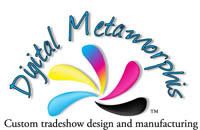Participating in a trade show involves a significant investment of time and money - and your business depends on getting a good return on this investment.
Here are 10 easy ways you can plan ahead for a successful trade show:
1) You can avoid incurring extra fees when you exhibit in a trade show by ensuring that you don't miss any of the deadlines related to registering and exhibiting. Costs go up by a big percentage after the registration and payment deadlines pass, so it's worthwhile to submit your application as early as possible - and to keep good files on each trade show you'll be participating in.
2) You can usually count on the safe arrival of everything you ship to a trade show. But shipping isn't always reliable - and what if part of your trade show booth display, your literature, or other components don't arrive in time? As part of your planning process for the show, you should come up with a plan of action for such a situation, so you'll be prepared to salvage your presentation.
3) Although receiving a really big order at a trade show can be exciting, you may want to check with other wholesalers to see whether the company that placed the order has a history of paying promptly and in full. Unfortunately, new exhibitors at trade shows are a frequent target for scammers who place a large order and disappear after receiving it, without paying the big bill they owe the supplier. Of course, large orders can also be perfectly legitimate; so protect your business by exercising caution and checking the company's references carefully.
4) You can use trade shows to test and refine your new product concepts without spending any money on fully producing them in quantity. Bring a sample or two of a new product to a show, and get customers' feedback on it. If it's a hit, go ahead and take orders for the item and schedule delivery dates that will allow for your production time. If the item needs to be reworked to incorporate customers' suggestions - or if it doesn't generate the interest you hoped - it's easy to alter or completely scrap the idea without losing money on production.
5) Your trade show booth may be approached by independent sales reps looking for lines to represent. If you're interested in selling your products through a sales rep, consider ahead of time what commission you would be able to pay a rep and still be able to meet your expenses and turn a profit. With that information in mind, you'll be prepared to have a productive meeting with a sales rep during or after the trade show.
6) Develop a concise, detailed production plan so you'll know how exactly long it takes you or your supplier to produce certain quantities of your products. Then pad your estimate time slightly. That way you have a high likelihood of meeting your quoted delivery deadlines, and may be able to pleasantly surprise your customer by delivering early. It's important to know your production time before you go to the show, so you can give your customers accurate delivery dates.
7) When getting ready to travel to a trade show, pack your displays and booth items with quick setup in mind. The things you'll need first for setting up your booth should be on the top when you open your boxes. At the bottom of your boxes should be the last things you'll need for setting up.
8) If the show promoter provides table covers for each booth, bring your own table runner with your logo on it. You can arrange it over the provided table cover to make your display stand out from the others.
9) Keep your own written record of the weight of each shipping case, both empty and full. That way you can ensure that you're being charged for the correct weight by the drayage company and the contractor.
10) Set up your trade show display with "easy information" in mind. Information your potential customers may want to know should be easy for them to find intuitively at your booth, if you're busy with another customer. You can use signs and literature with clear, visible headlines to answer frequently asked questions about your minimum orders, pricing, shipping, etc. If customers have to wait for you to answer their questions and can't easily find the information they need, they'll move quickly on to the next booth.
Saturday, June 2, 2007
Plan for a Successful Trade Show
Subscribe to:
Post Comments (Atom)




No comments:
Post a Comment